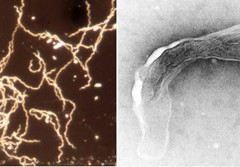The Global Search for Education: Research – Ticks
Borrelia burgdorferi cultivated from the brains of patients suffering from chronic Lyme neuroborreliosis as seen by dark field microscopy. Given that according to the CDC, there are 300,000 individuals who are affected annually by Lyme disease in the US, it is astonishing that so little research money has been given to understanding Lyme and tick-borne illnesses in this country and internationally. Much like the syphilis debate...
The Global Search for Education: France – Ticks
“Chronic Lyme disease is due to the persistence of Borrelia within tissues but is also probably due to other micro-organisms responsible for co-infections.”— Dr. Christian Perronne Lyme (Borreliosis), Anaplasmosis /Ehrlichiosis, Babesiosis, Rocky Mountain Spotted Fever, Bartonella, Tularemia, and more recently, Borrelia miyamotoi (a distant relative of Lyme Borreliosis) are recognized tick-borne...
The Global Search for Education: Germany – Ticks
“One of the first projects should be the improvement of the test sensitivity for chronic Lyme disease patients worldwide. The European Union has spent over 1 million Euros on the development of a high-sensitive lab on a chip project which is still underway.” — Dr. Armin Schwarzbach The CDC’s new estimate this month of 300,000 cases of Lyme disease per year in the US (10 times higher than previously...
The Global Search for Education: Norway – Ticks
“Our method is based upon live blood microscopy. Bacteria become visible by optical changes involving refraction index, swelling and spreading of cells which result in inflated structures well above the optical resolution capacities for a light microscope.” — Morten Laane and Ivar Mysterud Oslo University biologists Morten Laane and Ivar Mysterud have discovered a method to identify Borrelia bacteria in the...





Recent Comments